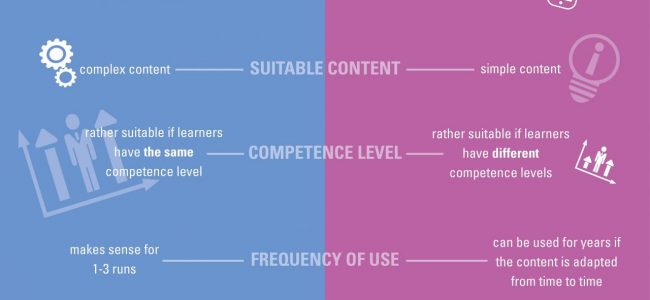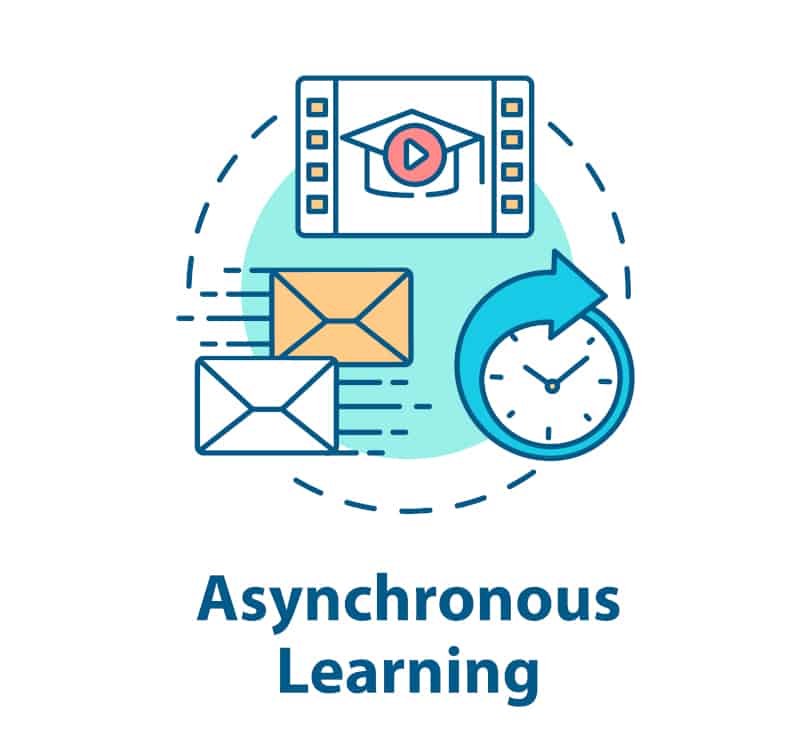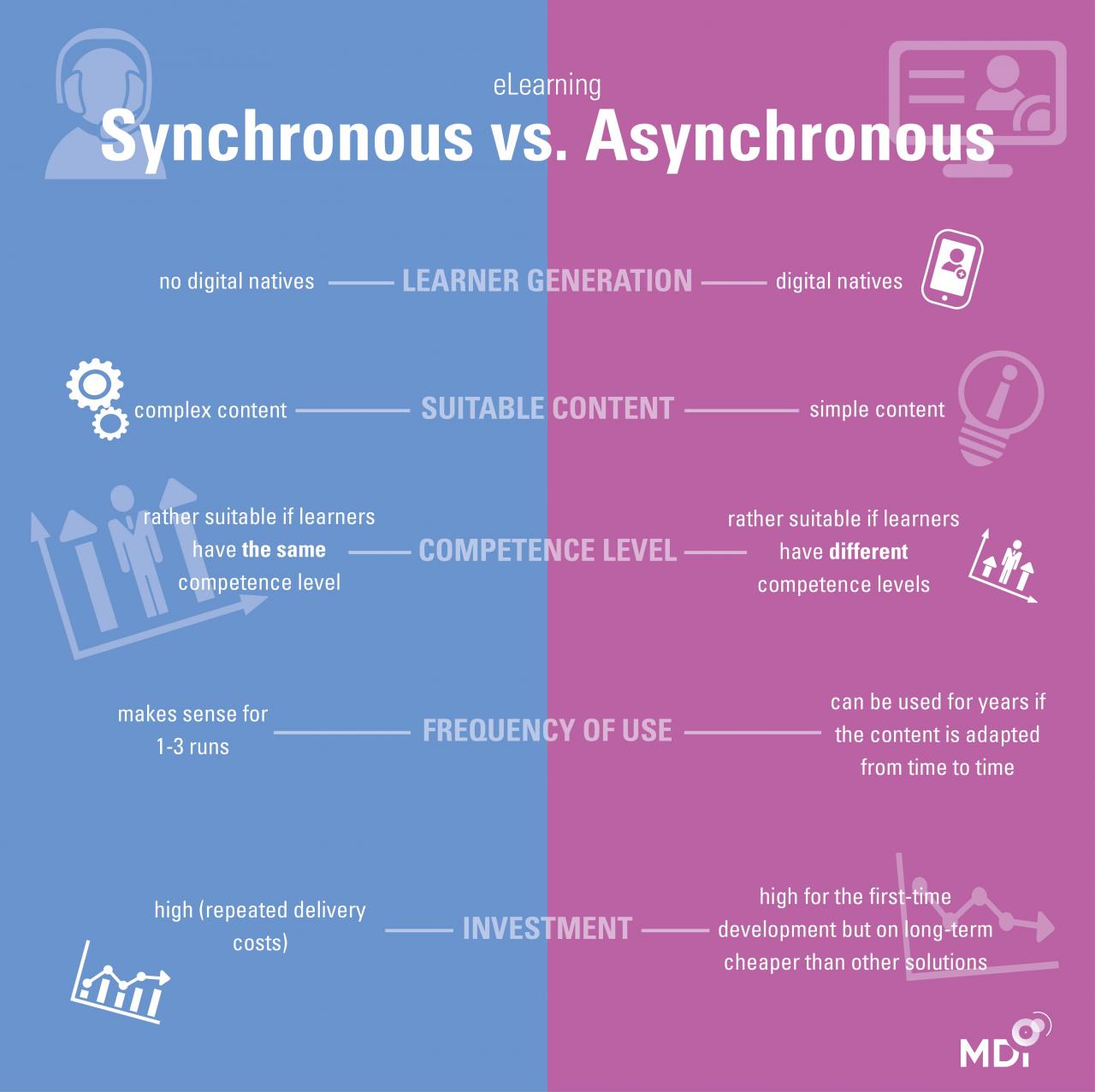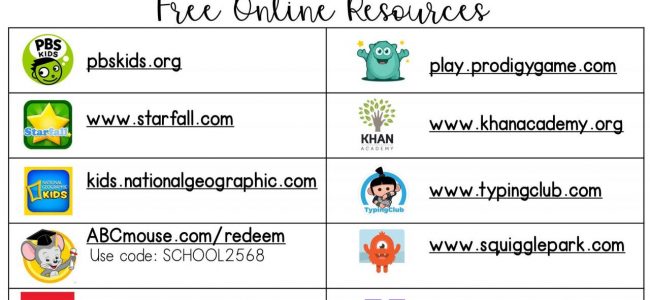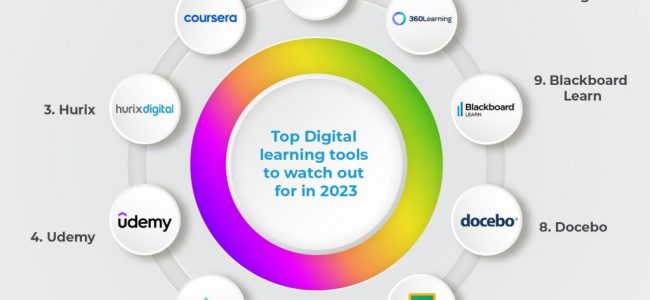
As remote learning becomes increasingly prevalent, educators and students alike are seeking the best educational technology tools to enhance their virtual learning experiences. This comprehensive guide explores the latest and greatest edtech solutions, providing valuable insights into their capabilities, benefits, and effective implementation strategies.
With the rapid advancements in technology, remote learning has evolved into a dynamic and engaging educational paradigm. By harnessing the power of these tools, educators can create immersive learning environments that foster collaboration, personalization, and academic excellence.
Types of Educational Technology Tools for Remote Learning
The diverse landscape of educational technology tools for remote learning can be broadly categorized into several types, each fulfilling specific functions and offering unique features. These categories include:
Communication and Collaboration Tools
- Video conferencing tools:Facilitate live virtual meetings, enabling synchronous communication between teachers and students.
- Instant messaging and chat tools:Allow for real-time text-based communication, supporting group discussions and quick question-answering.
- Virtual whiteboards and collaborative documents:Provide shared online spaces for brainstorming, idea generation, and collaborative writing.
Content Delivery and Learning Management Systems (LMS)
- Learning management systems:Provide a centralized platform for managing and delivering educational content, assessments, and communication.
- Online course platforms:Offer pre-designed courses and learning materials, often with interactive features and assessment capabilities.
- Virtual classrooms:Replicate the traditional classroom experience online, with features such as virtual breakout rooms and real-time Q&A.
Assessment and Feedback Tools
- Online quizzes and tests:Allow teachers to create and administer assessments, providing instant feedback and automated grading.
- Peer review and feedback tools:Facilitate student-to-student feedback on assignments and projects, promoting self-reflection and critical thinking.
- Data analytics and reporting tools:Provide insights into student performance, engagement, and progress, enabling personalized learning and data-driven decision-making.
Gamification and Engagement Tools
- Gamification tools:Introduce game-like elements into learning, such as points, badges, and leaderboards, to enhance motivation and engagement.
- Interactive simulations and virtual labs:Provide immersive and hands-on learning experiences, allowing students to explore complex concepts and scientific principles.
- Educational games and apps:Engage students through interactive games and activities that reinforce learning concepts and skills.
Evaluation Criteria for Selecting Educational Technology Tools
In choosing the most appropriate educational technology tools for remote learning, it is essential to establish clear evaluation criteria. These criteria should align with the specific learning objectives, pedagogical approach, and technological capabilities of the learners and educators.
Key factors to consider when evaluating educational technology tools include:
Cost
- Consider the cost of purchasing, implementing, and maintaining the tool.
- Determine if there are any ongoing subscription fees or additional costs associated with the tool.
- Assess whether the cost is justified by the potential benefits and impact on student learning.
Ease of Use
- Evaluate the user-friendliness of the tool for both educators and learners.
- Consider the level of technical expertise required to use the tool effectively.
- Ensure that the tool provides adequate support and documentation for users.
Alignment with Learning Objectives
- Determine whether the tool supports the specific learning objectives and curriculum goals.
- Consider the tool’s ability to enhance student engagement, foster collaboration, and promote critical thinking.
- Evaluate the tool’s potential to differentiate instruction and meet the diverse needs of learners.
Additional Considerations
- Consider the compatibility of the tool with existing systems and devices.
- Evaluate the tool’s security features and data privacy policies.
- Seek feedback from other educators and learners who have used the tool.
By carefully considering these evaluation criteria, educators can make informed decisions about the most effective educational technology tools to support remote learning.
Integration of Educational Technology Tools into Remote Learning Environments

Integrating educational technology tools into remote learning environments is crucial to enhance student engagement and improve learning outcomes. This involves selecting and implementing tools effectively, ensuring they align with pedagogical approaches and address specific learning objectives.
Selecting and Implementing Educational Technology Tools
- Identify specific learning objectives and align tools accordingly.
- Evaluate tools based on their functionality, ease of use, and compatibility with the remote learning platform.
- Consider student needs and preferences, ensuring tools are accessible and engaging for all learners.
li>Provide adequate training and support for students and educators to ensure effective implementation.
Best Practices for Enhancing Student Engagement and Learning Outcomes
- Incorporate interactive and collaborative tools to promote active learning and peer engagement.
- Utilize tools that provide real-time feedback and assessment to monitor student progress and provide timely support.
- Encourage students to use tools for self-paced learning, allowing them to progress at their own pace and review materials as needed.
- Foster a sense of community and connection through tools that enable virtual discussions, group projects, and peer-to-peer interactions.
Case Studies and Examples of Successful Implementations
Several case studies and examples demonstrate the successful implementation of educational technology tools in remote learning environments. These examples highlight the challenges and solutions encountered during implementation and analyze the impact of these tools on student learning and engagement.
Case Study: Khan Academy
Khan Academy, a non-profit organization, provides free online educational resources to students worldwide. During the COVID-19 pandemic, Khan Academy’s platform was widely used for remote learning, with over 100 million students accessing its resources.
Challenges:
- Ensuring accessibility for students with limited internet connectivity
- Providing personalized learning experiences for diverse student populations
Solutions:
- Developing offline learning materials for students without reliable internet access
- Using adaptive learning technology to tailor content to individual student needs
Impact:
- Increased student engagement and motivation
- Improved student outcomes in math and reading
Emerging Trends in Educational Technology for Remote Learning
The landscape of remote learning is constantly evolving, driven by advancements in educational technology. Emerging trends are shaping the future of remote learning, providing innovative tools and technologies that transform the learning experience. These trends point towards a future where remote learning becomes more immersive, personalized, and accessible.
Artificial Intelligence (AI)
AI is revolutionizing remote learning by automating tasks, personalizing content, and providing real-time feedback. AI-powered chatbots assist students with queries, while adaptive learning platforms tailor content to individual learning styles and progress. AI-enabled virtual reality (VR) and augmented reality (AR) simulations create immersive learning experiences that enhance understanding and engagement.
Cloud Computing
Cloud computing provides a secure and scalable platform for remote learning. Cloud-based learning management systems (LMS) offer a centralized hub for course materials, assignments, and assessments. Cloud storage enables students to access and share files from anywhere, fostering collaboration and seamless learning.
Blockchain Technology
Blockchain technology ensures data security and transparency in remote learning. It creates tamper-proof records of student progress, credentials, and transactions. Blockchain-based platforms can facilitate secure and efficient online assessments, reducing the risk of plagiarism and ensuring the integrity of academic records.
Personalized Learning
Educational technology is empowering personalized learning by providing tools that adapt to individual student needs. Adaptive learning platforms use data analytics to track student progress and adjust content accordingly. Personalized learning plans enable students to progress at their own pace, focusing on areas where they need additional support.
Virtual and Augmented Reality (VR/AR)
VR and AR technologies are transforming remote learning by creating immersive and engaging learning experiences. VR simulations allow students to explore virtual worlds, conduct experiments, and collaborate with peers in a realistic setting. AR overlays digital content onto the real world, enhancing learning by providing contextual information and interactive experiences.
Future of Educational Technology in Remote Learning
The future of educational technology in remote learning holds exciting possibilities. The integration of AI, cloud computing, blockchain, and VR/AR will continue to drive innovation and enhance the learning experience. Remote learning will become more personalized, immersive, and accessible, empowering students to succeed in a rapidly changing world.
Additional Considerations for Public School Education and Online Education
Public school education and online education present unique challenges and opportunities for the implementation of educational technology tools. In public school settings, there is often a need to address equity issues and ensure that all students have access to the same tools and resources.
Additionally, public schools may have limited budgets for technology, and teachers may need additional training and support to use tools effectively.In online education settings, there is a need to create a sense of community and engagement among students who may be physically separated from each other.
Additionally, online educators need to be mindful of the different learning styles of their students and provide a variety of tools and resources to meet their needs.
Challenges in Public School Education
* Equity:Ensuring that all students have access to the same tools and resources can be a challenge in public school settings. This is especially true for students from low-income families or who live in rural areas.
Budget
Public schools often have limited budgets for technology, which can make it difficult to purchase and maintain the latest tools.
Training
Teachers may need additional training and support to use educational technology tools effectively.
Opportunities in Public School Education
* Personalization:Educational technology tools can be used to personalize learning for each student. This can help students learn at their own pace and in a way that is most effective for them.
Collaboration
Educational technology tools can be used to promote collaboration between students. This can help students learn from each other and develop important social skills.
Engagement
Educational technology tools can be used to make learning more engaging for students. This can help students stay motivated and interested in their studies.
Challenges in Online Education
* Community:Creating a sense of community and engagement among students who may be physically separated from each other can be a challenge in online education settings.
Learning styles
Online educators need to be mindful of the different learning styles of their students and provide a variety of tools and resources to meet their needs.
Assessment
Assessing student learning can be more difficult in online education settings.
Opportunities in Online Education
* Flexibility:Online education offers students the flexibility to learn at their own pace and on their own schedule.
Access
Online education can provide access to educational opportunities for students who may not be able to attend traditional brick-and-mortar schools.
Global
Online education can connect students with educators and classmates from all over the world.
Recommendations for Implementing Tools Effectively
* Start small:Don’t try to implement too many tools at once. Start with a few tools that you think will be most beneficial for your students.
Get buy-in from stakeholders
Make sure that administrators, teachers, and parents are on board with your plans to implement educational technology tools.
Provide training and support
Teachers need to be trained on how to use educational technology tools effectively. Students also need to be taught how to use the tools and how to get help if they need it.
Monitor and evaluate
It’s important to monitor and evaluate the use of educational technology tools to make sure that they are being used effectively. This will help you identify areas where you can make improvements.By following these recommendations, you can help ensure that educational technology tools are used effectively in public school education and online education settings.
Conclusion
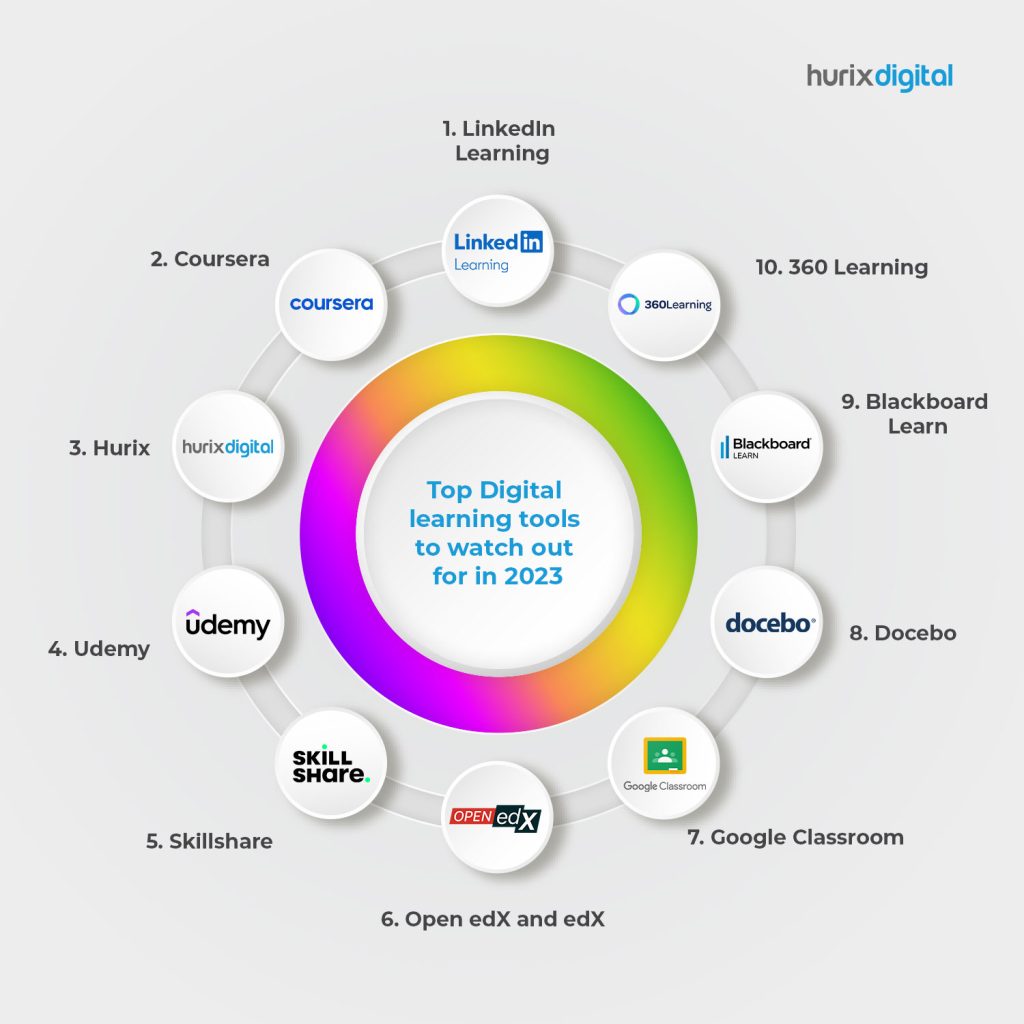
As we have explored in this article, educational technology plays a crucial role in enhancing remote learning experiences. By leveraging effective tools and resources, educators can create engaging and interactive learning environments that cater to the unique needs of remote learners.
It is imperative that educators and stakeholders continue to explore and implement these tools to ensure that students have access to high-quality education regardless of their physical location. By embracing educational technology, we can foster a more equitable and accessible learning landscape for all.
Ending Remarks
In conclusion, the effective integration of educational technology tools is essential for optimizing remote learning experiences. By carefully evaluating tools, implementing them strategically, and embracing emerging trends, educators can empower students to thrive in this evolving educational landscape. As technology continues to shape the future of education, we can expect even more innovative and transformative solutions to emerge, further enhancing the accessibility, engagement, and effectiveness of remote learning.
FAQ Insights
What are the key benefits of using educational technology tools for remote learning?
Educational technology tools offer numerous benefits for remote learning, including increased accessibility, personalized learning experiences, enhanced collaboration, improved engagement, and data-driven insights for educators.
How can I evaluate the effectiveness of different educational technology tools?
To evaluate the effectiveness of educational technology tools, consider factors such as cost, ease of use, alignment with learning objectives, student engagement, and the availability of support and resources.
What are some emerging trends in educational technology for remote learning?
Emerging trends in educational technology for remote learning include the use of artificial intelligence, virtual and augmented reality, personalized learning platforms, and adaptive learning technologies.
